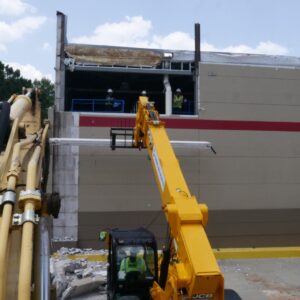Choosing the best warehouse lighting is crucial to your facility’s safety and productivity. It can also affect your energy costs.
The right lighting system will provide bright, even illumination without glare or flickering. It will ensure that your employees can see clearly and make fewer mistakes, which saves you money in the long run.
Color Temperature
Color temperature is an important aspect of warehouse lighting. It impacts visibility, which in turn affects safety and productivity. It’s also an important factor for employees to see products clearly and easily read labels.
The best warehouse lighting emits a cool white light that is less glaring and reduces eye strain. This range of lights, between 4000K and 5000K, has been proven in studies to help keep workers healthy and create a productive workspace.
High-intensity discharge lamps are still the most common type of warehouse lighting, but they have a higher rate of lumen depreciation than other options. They also produce a yellow tint, which is not recommended for warehouses. Alternatively, metal halide lamps have a more white color.
Beam Angle
The beam angle is one of the most important aspects to consider when choosing the best warehouse lighting. This will affect how bright the light is and the visibility of the space.
Wider beam angles will provide widespread illumination and are great for open areas, such as storage rooms. However, narrower beam angles can provide more focused light and are great for rooms with high ceilings.
If you are looking for LED lights, you should be aware of the beam angle that will work best for your room. A wider beam angle would be suited to areas such as lounge areas, where people tend to relax and watch television.
However, wider beam angles can also produce too much light for a small area, such as a bedroom or bathroom. This can create a harsh environment and may cause glare.
Flicker-Free
Flicker-free lighting is a must for industrial warehouses where there are often moving machinery. If the lights are flickering, it will not only impede worker visibility but also contribute to safety hazards and fatigue in your facility.
LED lights are highly energy efficient, reducing power usage by up to 70%, while extending their operating lifespans to more than 50,000 hours. This can save your facility significant maintenance costs.
In addition to the cost savings, converting to LED lighting also has many other benefits. They last much longer, which reduces the number of lighting replacements required, and they offer a more stable light output and less heat generation.
However, these are only three of the most important considerations when selecting the right lighting for your warehouse. To get the most out of your investment, consider all the factors.
Energy Efficiency
The best warehouse lighting provides a safe and comfortable work environment, while also ensuring that your energy costs are minimal. When you choose the right light for your warehouse, it’s important to consider how much energy each fixture consumes and how long they’ll last before needing to be replaced.
LED lighting is the most energy efficient option available, saving up to 75% of your energy bills compared to traditional metal halide or fluorescent lights. They can be dimmable and customized to fit your specific needs.
Another way to save energy is by using controls that reduce light when areas are unoccupied, such as dimmers or switching systems. These can be installed to turn on and off based on time of day or movement in the warehouse.
A poorly designed lighting system can make it difficult for employees to read labels, identify products or safely make their way through a warehouse. New lighting technologies can improve lighting quality and distribute the light evenly across a workspace, improving employee safety and productivity.





